Articles in the Dog Training Category
Dog Training »

If you’ve never seen a dog with serious food aggression issues, it’s difficult to appreciate the potential severity of the problem. Food aggression issues are not necessarily a reflection on the personality or training level of the dog: it’s an instinctive thing, and although dogs with a general aggression problem are naturally more prone to demonstrating food aggression, it’s also exhibited by otherwise-sweet, well-behaved, well-adjusted family dogs.
Dog Training »
Jumping is a common problem among dogs. It’s rarely a problem for the dogs themselves – in fact, jumping seems to act as a reward in itself. It’s a different kettle of fish for the exasperated owner, who’s forced to deal with a new set of muddy footprints/gouges in their skin and clothes/offended guests/scared children!
To stop a dog from jumping, consistent training will be needed. Many owners inadvertently encourage jumping behavior from puppyhood: when a small puppy comes gamboling up to us, wiggling with excitement and making small, clumsy leaps at our knees, it’s almost natural to lean down and respond in kind.
Effectively, we reward that puppy’s “jump-y” greeting by reacting with exuberant affection, hugs and kisses. The puppy learns a fast lesson: jumping is a good thing, because it results in plenty of positive attention and physical contact.
Your dog doesn’t understand the difference between a jump as a small, cute puppy, and a jump as a huge, hairy adult. To a dog, a greeting is a greeting, and just because he’s aged by a few months is no reason to stop jumping – at least, not voluntarily.
You’ll need to take matters into your own hands, and make it perfectly clear to your dog that jumping is no longer an option.
When is your dog jumping not appropriate?
Many owners of smaller dogs actually expect them to jump up – among toy dog owners, jumping seems to be viewed as a sign of excitement and affection on the dog’s behalf. The good news is that these dogs aren’t likely to knock anyone flying when they’re feeling rambunctious, and they’re small enough that their size usually won’t intimidate any but the youngest of children.
On the other hand, there’s rarely a scenario where strangers will actively welcome being leapt up on by an unknown dog, regardless of said dog’s size; really, it’s just plain good form to teach your dog the “off” command, so that you’re prepared for those incidences when you’re not directly on hand to stop the jumping behavior.
For owners of large-breed dogs, the “off” (or “no jump”) command is mandatory. Big dogs are often taller than humans when they rear up on their hind legs (and just imagine the experience from a child’s point of view, with a dog’s slavering jaws looming above your own head!) – they’re often heavy enough to knock smaller adults tip over tail. At the very least, a large dog’s paws are heavy enough to gouge long rents in cloth and exposed flesh. Bruising and scratches are unpleasant enough to deal with when they’re your own problem; but they’re much worse when your dog’s inflicted them on somebody else!
Any kind of dog jumping that involves anyone apart from yourself is just bad form. All owners with even pretensions of responsibility should arm their dogs with a reliable recall to the “off” command – just in case.
Why do dogs jump?
The main reason that most dogs jump up is simply out of excitement.
Many dogs don’t jump at all, apart from when their owner returns home after a relatively prolonged absence (like the average workday). If your dog is leaping up on you in these circumstances, there’s no sinister motivation at work here: he’s literally jumping for joy.
A less common, but more serious, reason that some dogs will jump is to exert their dominance over you (or over whomever they’re jumping on). Dogs are pack animals: they live in designated hierarchies of social rank and order. When a dog needs to assert his dominance over a lesser animal, one way of doing so is to declare physical superiority, which is usually done by “jumping up”: he’ll sling one or both paws over the other dog’s shoulders.
You’ll be able to tell the basic reason for your dog’s jumping simply by considering the circumstances surrounding the event. If he only jumps up in periods of great excitement (like during play-time, or when you return home from work) then he’s clearly just demonstrating an exuberant frame of mind.
If the behavior occurs in a variety of situations, then it’s more likely that he’s expressing dominance over you, which is a more complex issue – the jumping’s just a symptom of an underlying attitude and communication issue. Essentially, you’ll need to make some serious adjustments to your overall relationship with your dog, and brush up on your alpha-dog techniques (tip: SitStayFetch has some fantastic resources on coping with a dominant dog – there’s a link to the site at the bottom of the page).
Four paws on the ground, please!
How you react to your dog’s jumping plays a big role in whether or not that behavior gets repeated. You’re going to need to make a prolonged effort to be consistent in how you choose to deal with this problem: for your dog to stop jumping, he needs to be taught that it is never ever acceptable for him to do so.
This means that you can’t allow him to jump sometimes, but forbid him from doing it at other times. Your dog can’t understand the difference between a playful and an irritable mood, or your work and play clothes: all he understands is that, if you allow him to jump up on some occasions, he’ll try to jump up on you whenever he feels like it, because he doesn’t know any better.
Stop your dog from jumping
Most trainers agree that the most effective way for you to weed out unwanted behaviors (like jumping) in your dog is also the easiest: all you have to do is simply ignore him whenever he jumps up. The idea is to give him the cold shoulder: withdraw all attention, even negative attention (so no yelling, shoving, or corrections).
Here’s how to implement this training technique: Whenever your dog jumps up on you, turn your back straight away. Since dogs understand body language a lot more clearly than they do the spoken word, you’re going to be using your posture to convey the message that such behavior isn’t acceptable here: fold your arms, turn your back, turn your face away from him and avert your eyes. ‘
This is where a lot of people make a mistake: they confuse ignoring the behavior with ignoring the dog. You’re not ignoring the behavior – i.e., you’re not carrying on with whatever you were doing as if the jumping wasn’t happening; you’re ignoring your dog. You’re still going to react; but your reaction is for you to actively ignore him.
The cold shoulder is a really effective way of communicating your displeasure to a dog – he’ll catch on very quickly. Without the encouragement of your attention and your reactions to his behavior, he’ll calm down very quickly indeed.
When to praise
When all four paws are on the ground, then – and only then – you can praise the heck out of him!
Don’t be confused by the proximity of the positive reinforcement to the negative – dogs have a very short “training memory”, and are only capable of associating a reaction from you with whatever behavior it is they’re exhibiting at the time of that reaction.
So, it’s perfectly OK for you to react with wild enthusiasm the very second that his paws touch the ground, even if you were cold-shouldering him the split-second before.
Recommended Reading
For more information on understanding and solving canine behavioral problems, you’d probably be interested in checking out SitStayFetch. It’s a complete how-to manual for dog owners, and is packed with just about all the information you’ll ever need on dog psychology, canine communication how-to’s, practical advice for dealing with problem behaviors, and detailed step-by-step guides to obedience training.
Dog Training »
Understand and break dog aggression
While many of us look at our dogs as cute and cuddly companions it is also true that we can also create a monster without even realizing it. Aggression in dogs is on the rise and the truth is there are a reported million dog bits reported every year. The very same cute and cuddly companions we know so well are also the very things we fear when we are victims of these aggressive dog behaviors.
Now I know that many of you are wondering how such a cute and innocent animal can cause such devastation and we ask ourselves the very same things when a murderer is caught, or a robbery is committed. One of the most important things we as humans fail to truly understand is dogs are not property. They are a part of the family and should be handled with care.
Stages to Remember:
Here are a few stages in the puppies life that are vital to their development just as our children have stages that they need special care so do our pets:
8-14 weeks- This is a critical time in the puppy’s life. It needs human contact and gentle care. Constant interaction with people to be socially stable will be important later in their development.
6-14 months- This is another critical time in the puppies life when they must be introduced to visitors of the home (i.e. adults, children, and other dogs) at this stage the puppies are becoming more protective of the home and more territorial. It is important that you keep them social with other dogs and people.
[caption id="attachment_1186" align="aligncenter" width="229" caption="Dog Aggression"]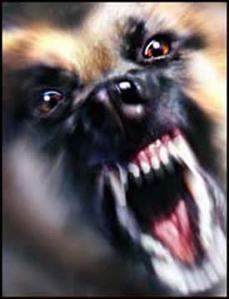 [/caption]
[/caption]
Dog aggression can happen for several reasons. The most common is lack of socialization. However too much socialization or spoiling the dog can cause them to act out when they do not get their way. To keep the dog in its place the adults must show dominance over the dog or puppy at all times. Slacking up once or twice may give them the opening or signal they need to move forward. Dogs are pack thinkers by nature and when they are part of your family they see you as part of their pack. If you do not establish dominance early they can “takeover” the family by going after the most submissive family member including the children. Aggressive dog behavior should never be tolerated!
Some dogs are more aggressive by nature so matching them up with people who have the wrong intentions or desire for the dogs can increase their aggression drastically. Many breeds like: Doberman dogs and Rottweiler’s tend to be more aggressive then a Labrador or Golden Retriever by nature and how we raise them can increase their aggression as well.
Where a dog is raised, the environment or conditions can also play a part in their aggression.
For instance if a dog is raised in a “Puppy Mill” it is much more likely to be aggressive if not sold before the age of 8 or 9 weeks because they usually lacks the proper socialization required to interact with other dogs or people
How can you tell if your dog is becoming too aggressive:
- If your dog is protective over food (i.e. snaps or growls)- this is known as dog food aggression
- If your dog chases moving objects (i.e. cars, bikes, etc…)
- If your dog gets fearful when around strangers- this is known as dog fear aggression.
- Overly barks or growls
If you think your dog is becoming aggressive, there is an excellent dog training book many people find helpful written by a professional dog trainer. You can also consult a dog obedience trainer. A professional can ensure your safety as well as the dogs in cases like this to help you re-establish your dominance in the home.
A good first start may be taking a look at the dog training book to help stop aggression in dogs. Professional dog trainers can stop aggressive dog behavior but they are not cheap and you may find the advise given in the dog training book to help a great deal with raining an aggressive dog.
Photo source:canineangel.wordpress.com
Basic Dog Commands, Dog Training »
Puppy dog requires obedience training
We often think of a happy family as a family of 4 two kids, a husband, and a wife that all live happily in their single family home with a white picket fence with their dog. Well life is not that short and sweet. Even though we wish it to be…we often have to live in the reality that things are not always that perfect.
So when you get a puppy you want it to listen to you. Getting a puppy dog to listen requires obedience training.
That sounds pretty simple but many times that is not always what we get so taking your puppy to a couple of obedience classes should help right? Traditionally yes…however Dog trainers are what they are cracked up to be these days and finding a trainer that works can sometimes be a chore we don’t want to continue. In the past many dog trainers have worked hard to get their certifications. Some trainers had to work side by side with animal handlers like breeders, groomers, or even veterinarians just to become qualified. This meant hours of pain staking handling of dogs some good, and some bad but hours just the same.
[caption id="attachment_1114" align="aligncenter" width="300" caption="Dog Obedience Training"]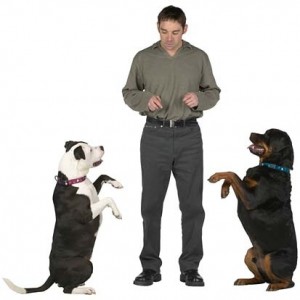 [/caption]
[/caption]
In today’s world the Dog trainers are being taught on the internet. They don’t receive the long grueling hours that their fellow trainers have in the past. So how do you know if you are getting a real hard earned trainer…hope! Just like the masses. You could ask to see their certification, ask how long they have been in this field, but it is much harder to know now then before.
What is Obedience training?
Well it is the learning of basic everyday commands dogs need to know.
They learn how to:
- Sit
- Come
- Stay
- Heel
- Down
These commands will teach a dog to listen in the event of traffic, or a guest arriving. However it should not be mistaken for full training. The dog’s attitude toward others might stay the same…so if you dog bits someone, or attacks you should be wondering whether or not the dog is good for the home.
Along with that cute, cuddly face is a lot of responsibility. As we love our dogs we should see that they are properly trained to the best of our ability. After all their safety is up to us and we owe them that much!
You may find dog obedience training helpful.
Photo source:bestinternetdogtraining.com
Dog Training »
Dog Clicker training noisemaker as a marker for behavior
Dog Clicker training is the conditioning of dogs with the use of a mechanical device known as the “Clicker”. This device helps re-enforce when your dog or puppy has done something correctly and a sort of reward for good behaviors. The struggle of training or conditioning dogs has been a concern for many centuries.
The “Clicker” training started as a way to call or communicate with dolphins and flying animals like pigeons. It was not used for such things as dog training. However the idea of using devices to help with commands in training has been around for quite some time; clicker training has become a growing fade. The use of clicker training has proven effective in the training of horses as well.
[caption id="attachment_1107" align="aligncenter" width="292" caption="Training a dog with Clicker"]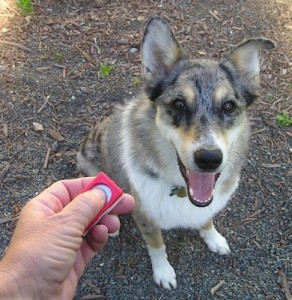 [/caption]
[/caption]
There are a couple disadvantages of “Clicker” training such as the occasion for the dog to grow dependant on the “clicker” for show of good behaviors or the use in group settings can cause confusion in the dog trying to determine which clicker you are using. There are ways to wean your pet of the use of the clicker and it should only be used when you are teaching your dog new tricks or trying to re-enforce some older tricks.
The objective of training and teaching your dog tricks is always the same whether you use the clicker” a “whistle” or voice command” it is important to show reward when the your dog is showing good behaviors. Forming a bond with your puppy dog and showing them you are the “owner” and they are the “dog” will help with your effectiveness in training. Remembering to keep control while training and without will ensure that they will learn when they are being trained.
“Clicker” training has been around since World War II it has been affective in training many animals including dogs and when done properly it can be a very affective tool with your puppy or dog!
Photo source:87australianshepherd.blogspot.com
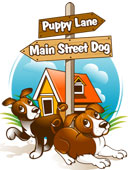















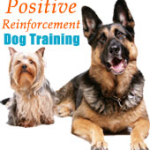

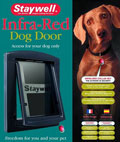 The
The